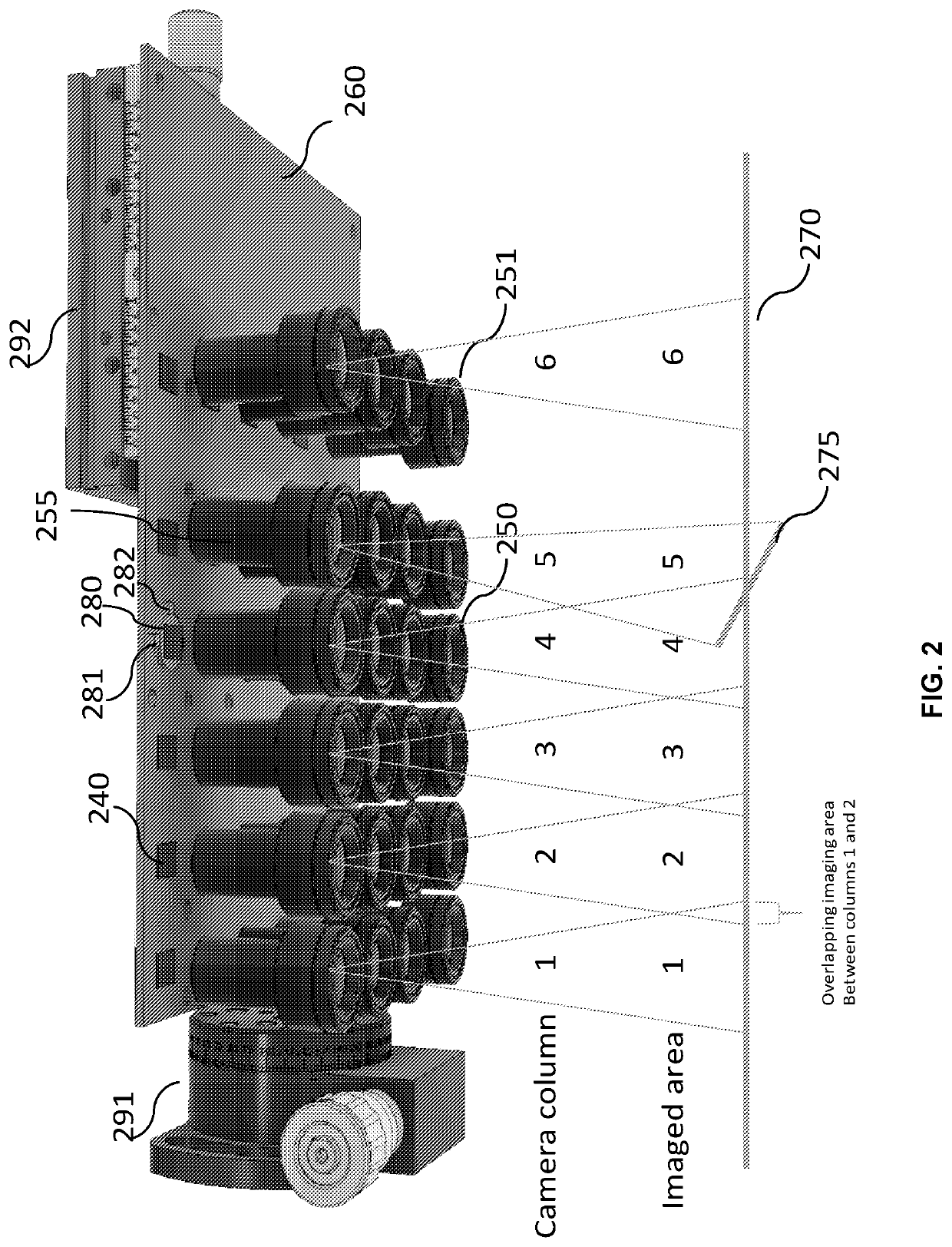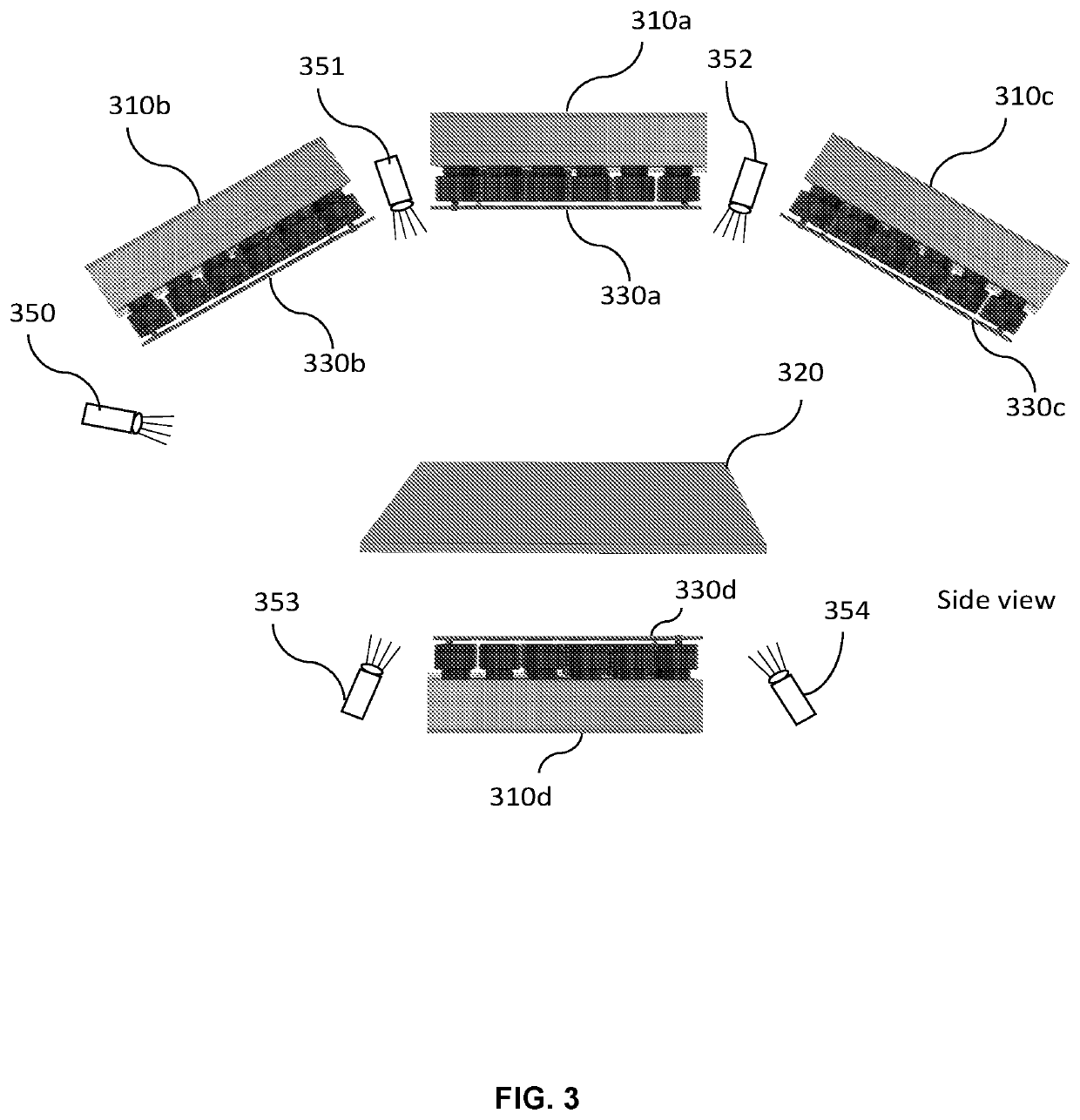Unscanned optical inspection system using a micro camera array
- Summary
- Abstract
- Description
- Claims
- Application Information
AI Technical Summary
Benefits of technology
Problems solved by technology
Method used
Image
Examples
examples
[0097]Here we provide 4 example embodiments: the first for imaging PCB over an area as large as 9×12 inches. The second and 3rd are designed to image wafers 12 inches (300 mm) in diameter. The fourth example is specifically designed for imaging biological samples located in 96 well plate configuration. For brevity, all imaging systems describe herein have 10 um resolution. For a lens with a 25 mm focal length, an f / # of 2.5, and a focal plane 225 mm away from the pupil of the lens, the system will have a magnification of 0.8×. If a 20 megapixel imaging sensor is used in each micro-camera (1 um pixel size, 5216×3896 arrangement in each sensor), then each micro camera will image an area of 41.6×31.2 mm at the imaging plane.
[0098]To image a continuous area of 9×12 inches, (approximately 228.6×304.8 mm), one would be required to tile 10×13 sensors each separated by 25 mm. For one snapshot acquisition of the system, assuming 8 bits are detected per image sensor, this corresponds to 2.6 g...
PUM
 Login to view more
Login to view more Abstract
Description
Claims
Application Information
 Login to view more
Login to view more - R&D Engineer
- R&D Manager
- IP Professional
- Industry Leading Data Capabilities
- Powerful AI technology
- Patent DNA Extraction
Browse by: Latest US Patents, China's latest patents, Technical Efficacy Thesaurus, Application Domain, Technology Topic.
© 2024 PatSnap. All rights reserved.Legal|Privacy policy|Modern Slavery Act Transparency Statement|Sitemap



